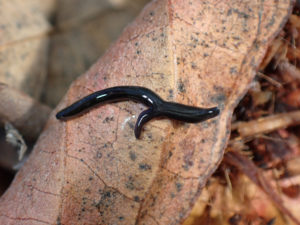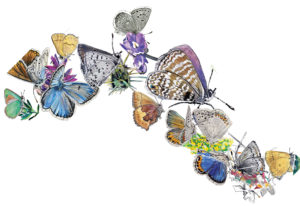Organic matter is the most important part of the soil because it is fodder for the many organisms that keep soil alive and elastic. And because it is consumed by these organisms, soil organic matter needs to be replenished. The makings of soil organic matter are a constant part of all of our lives, from banana peels and apple cores to tree bark and fallen leaves. By collecting and recycling these materials back into the ground, each of us can care for the soils around us, regardless of where we live or what our livelihoods may be. The following soil-friendly practices are just an introduction to the many ways that we can have a positive impact on the land around us.
Composting
There are many techniques for making compost. All of them involve combining compost’s four main ingredients: Browns, Greens, Air, and Water.
Browns are dry, woody materials that are high in carbon, such as fallen leaves, dry grass, branch trimmings, and sawdust. Greens are moist materials high in nitrogen: food waste (such as fruit and vegetable trimmings), new grass clippings, and fresh weeds. To make compost:
- Chop materials to help them break down more quickly.
- Mix Browns and Greens in equal amounts.
- Maintain Air and Water balance by keeping compost as moist as a wrung-out sponge.
- Air can be the forgotten element of compost; to make sure yours has enough, turn or poke your pile about once a week.
Do Compost:
- Fallen and trimmed leaves
- Chopped, woody prunings
- Pine needles
- Most sawdust
- Grass clippings
- Plant trimmings
- Weeds without seed heads
- Fruit and vegetable trimmings
- Coffee grounds and filters
- Tea bags
- Herbivore manures
Don’t Compost:
- Grains, beans, or breads
- Sawdust from plywood/treated wood
- Meat, bones, or fish
- Dog, cat, or bird feces
- Diseased plants
- Dairy products or grease
- Mulching
An easy, low-maintenance way to build soil over time is to mulch with organic materials. Any material laid on top of the soil is a mulch; inorganic materials such as gravel and crushed rock can be used, but plant materials are better because they break down and enrich the soil. In addition to building soil, mulch offers other benefits, such as retaining soil moisture, moderating soil temperature, suppressing weeds, preventing erosion and soil compaction, and conserving landfill space. The best plant materials to use for mulch are those you can obtain locally. This doesn’t mean commercial wood or bark chips from nurseries—they may have originated far, far away—but organics such as wood chips from a local tree service or leaves from your neighbor’s trees. Such materials are called green waste mulches, and they include chipped or shredded wood from trees or even used pallets; pine needles; leaves; other plant trimmings; grass clippings; and compost.
The very best mulch of all is one you’ve made yourself. Soft clippings can be cut into smaller pieces by hand; if you have a rotary mower, run it over dry leaves to chop them up. Brush cutters and weed whackers can also be used to cut materials to mulch size.
As for how much mulch to use once you’ve made it, a two- to four-inch layer will work in most circumstances. For weed control, use a coarse mulch such as wood chips and spread a four- to six-inch layer. For moisture retention, use a finer mulch such as compost or shredded leaves, applying a layer no more than two inches thick.
Grasscycling
An often overlooked but very simple way to support the soil is by leaving grass clippings on the lawn. Grasscycling quickly and easily returns nutrients to grass and soil.
To start grasscycling, take these few steps.
- Mow often. Mow often enough that no more than a third of the grass blade is cut. The shorter the clipping, the faster it decomposes.
- Mow dry. Mowing when the grass is dry prevents clippings from clumping.
- Leave the clippings on the lawn! You don’t need special equipment for grasscycling. Simply remove the bag from your mower as you mow, or, better yet, use a push reel mower.
Another way to care for soil (and the larger environment) is to reduce or eliminate the lawn altogether. The tradition of landscaping with great swaths of grass orginated in climes much different from our own, where rainfall is frequent and occurs year-round. Here, where we experience six months or more of drought each year, watering the lawn can be a costly and wasteful proposition.
In addition, most lawns are nitrogen-greedy; over the course of time, they can deplete this important soil nutrient. What’s more, in feeding the lawn (that is, in adding nitrogen) gardeners inadvertently pollute both land and water. Grasscycling can help return nitrogen to the soil, but a better solution is to replace the lawn with a drought-tolerant ground cover or mulch.

.jpg)



